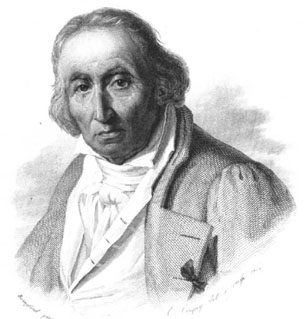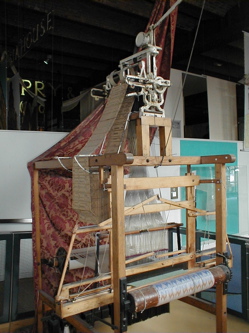Along with the
Mad Scientist/Quirky Inventor, the Rebel is one of the quintessential Steampunk character types. The etymology of the word Steampunk, while a riff on the phrase "cyberpunk," is still tied directly to the rebellion against the status quo that Punk desires. To be "Punk," in fact, is to rebel against whatever system/government/social convention is currently in place.
There have been thousands of rebels throughout history; the Confederate States of America during the American Civil War, the Sons of Liberty and others during the American Revolution, the leaders of the Glorious Revolution in Britain, Charles Babbage, Guy Fawkes, Ada Lovelace, Nelson Mandela, and so on and so forth. My naming the revolutions or people isn't a judgment on any other revolutionaries, merely a sampling of the type of person I'm talking about.
In fiction, the list is equally as long. One of the most famous Steampunk trilogies,
A Nomad of the Time Streams, has the unique distinction of its author Michael Moorcock being a card-carrying anarchist. In
Warlord of the Air, the first novel in the trilogy, main character Oswald Bastable begins the story as a loyal son of the British Empire before he slowly becomes a Rebel when he realizes how wrong things really are in the alternate world he's ended up in.
Whitechapel Gods by S.M. Peters has Oliver, Missy, and the other "heroes" of the novel battling against the servants of Mama Engine, Grandfather Clock, and Baron Hume.
Soulless by Gail Carriger has Alexia Tarabotti rebelling against convention while she seeks to help Lord Maccon and solve the mystery that plagues the werewolves and vampires of the United Kingdom.
Steampunk, some will argue, is about rebellion against the Empire in all its forms. The best Steampunks, these same people say, are the ones that reject the way the world is and battle to change it for the better.
Perdido Street Station by China Mieville has Isaac Dan der Grimnebulin, a scientist that fills the role of rebel quite nicely once you look at him closely;
The Alchemy of Stone by Ekaterina Sedia claims Mattie, the automaton main character, as a rebel against the world. Mattie is an emancipated automaton -- this is something that simply
does not happen in the world of the novel. The fact that Mattie remains unharmed and successful is testament to the success of her rebellion.
Who is the rebel in Steampunk though? What type of person is he or she?
Well there are two kinds: the Rebel-as-Hero and the Rebel-as-Villain. The Rebel-as-Hero is someone who fights for a cause above all else. Sometimes that's to right a wrong, sometimes that's to move themselves up in the world against resistance, and sometimes that's because they rode into town and realized "wait a minute, that lord/king/baron/sheriff isn't treating his people right." The Rebel can be an Adventurer as well, but there's no guarantee that an Adventurer is a Rebel. A good example is Phileas Fogg, perhaps one of the most famous Adventurers in fiction, who does not waste any time on his trip around the world by rebelling against anything. He does save Aouda, but that's not a rebellion against her native culture. Rather, it's a simple rescue taking place throughout the course of the novel.
The Rebel-as-Villain is a bit trickier to tease out. This villain-rebel might use fear to make his point, is often mistake for a terrorist, and will use any means necessary to achieve his end goal. The rebel may have altruistic ideals at the beginning, but those quickly become subsumed under an overriding desire for revenge, anger at the establishment for a (sometimes incorrectly) perceived wrong, or even pain at something that happened in their past. The Rebel-as-Villain also makes common use of extreme violence in his acts. Guy Fawkes's plan to blow up Parliament in the 1600s is a good example of a common Rebel-as-Villain plan. They want to kill as many people as possible to prove their point. I'm not saying Guy Fawkes fit the bill of Rebel-as-Villain, mind you.
 |
Nemo from the film
"The League of Extraordinary Gentlemen" |
Perhaps the most famous Rebel in Steampunk fiction is Captain Nemo. The Villain-Hero of Jules Verne's
Twenty Thousand Leagues Under the Sea is one of those characters that almost defies description; he is a Mad Scientist, and a Rebel, and an Adventurer, and everything else about a Steampunk hero that writers strive to include.
From different perspectives, you can argue that Nemo is
both a Rebel-as-Hero and a Rebel-as-Villain. He uses fear to get his point across; as the novel opens, Professor Pierre Aronnax is sought out to study the effects of an attack by a giant cetacean on several vessels in the Atlantic shipping lanes.
Nemo also battles the Empire to revenge himself for the failed Sepoy Rebellion of 1857 to 1859. We see Nemo in the guise of Rebel-as-Hero for his role in that rebellion, as the main thrust of that conflict was to expel the British from India. Nemo is also a Rebel-as-Hero because he gives aid to others rebelling against their masters -- in one case aiding the Greeks against the Ottoman Turks in the Cretan Revolt of 1866 to 1869.
Nemo fills the Rebel-as-Villain role primarily for his unrelenting desire to destroy the British Empire's power by any means necessary. He ruthlessly and silently attacks British warships in such a fashion as to kill everyone on board without being seen by ramming the vessels below the waterline. He spreads fear and terror throughout the Empire simply through existing. The sheer stories that are passed around about him spark speculation and terror among all the Empire's possessions.
The Rebel, whether as a Hero or as a Villain, is an important part of Steampunk fiction. There are many people who say that if there isn't a rebel character, then the story isn't really Steampunk. I don't know if I agree with this statement, as Steampunk has swiftly morphed into more of a Pulp-adventure genre than anything, but that's neither here nor there. The point is that Steampunk and Rebels go hand-in-hand.
What other Rebels can you think of in Steampunk?

















